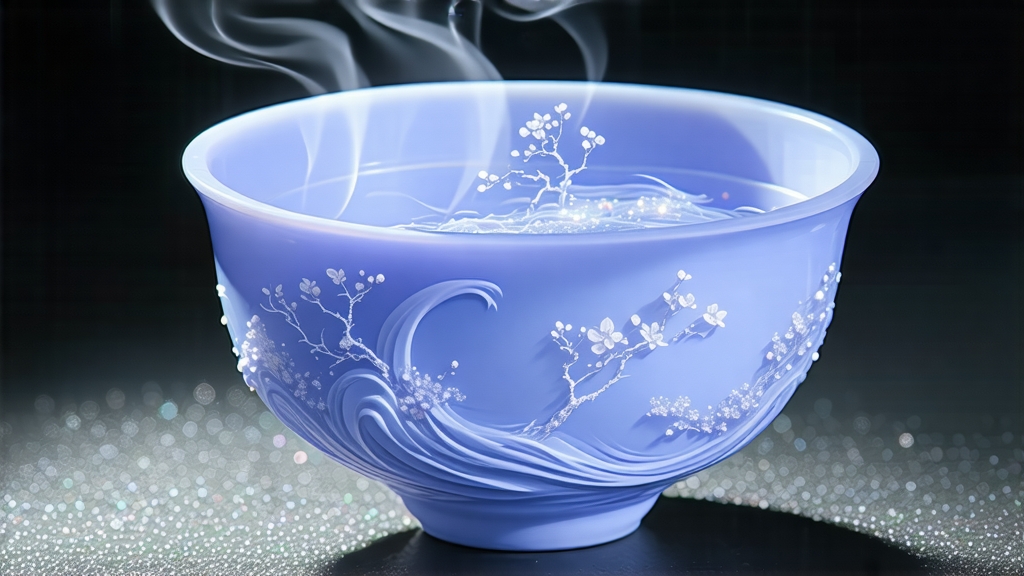
Silver Needle, known in Chinese as Bai Hao Yin Zhen, is the quiet aristocrat of white tea. To the uninitiated it may look like a jar of pale pine needles, yet in the cup it releases the scent of fresh rain on hay, the taste of mountain spring water, and a sweetness that lingers like a half-remembered lullaby. Its story begins in the coastal hills of northern Fujian, where the Min River bends toward the East China Sea and the white granite peaks of Taimu Mountain trap moist ocean air. Here, around the counties of Fuding and Zhenghe, tea gardeners have, for close to two centuries, reserved the first downy buds of spring for a tea that was once pressed into silver ingot molds and sent as tribute to the imperial court.
History first names the tea in the Daoguang reign (1821-1850), when a Fuding tea maker named Wei Chengen began selecting only the unopened leaf buds of the Da Bai cultivar, withering them slowly on woven bamboo trays, then drying them in mountain shade. The result was so pale it resembled a needle of polished silver; so delicate it demanded its own class. By the late Qing, Silver Needle had become one of the “three white tributes” alongside Xinyang Maojian and Dongting Biluochun, crossing the seas to London where Edwardian tea merchants auctioned it as “Pekoe Tips” at prices higher than first-flush Darjeeling.
Botanically, the tea belongs to Camellia sinensis var. sinensis, Da Bai (Big White) strain. The bushes flush later than most, waiting until nightly temperatures hover around 10 °C so that the buds accumulate amino acids and a protective layer of white trichomes—tiny hairs that scatter light and give the tea its silvery sheen. A single kilo of Silver Needle requires roughly thirty-eight thousand buds, all picked within a three-day window when the bud is exactly 15–20 mm long and still unopened. Experienced pickers work backwards along the row, cradling the bud between index and middle finger, snapping it with the thumbnail so the tiny “fish-tail” base remains intact—an indicator of careful plucking that prevents oxidation stains.
Processing is disarmingly simple yet unforgiving. The buds are first spread on reed mats or wire mesh in a shaded pavilion where mountain breeze lowers their moisture from 80 % to roughly 40 %. This primary wither lasts 24–36 h and is the moment when grassy aldehydes volatilize, leaving behind a quieter fragrance of cucumber skin and sweet corn. Once the buds feel leather-soft, they are moved into a low-temperature convection oven set at 35–40 °C for another 4–6 h. The goal is not to “bake” but to finish the dehydration so that the final moisture reads 5–6 %. Overheat the air and the trichomes scorch, turning the tea ochre; under-dry and the buds will sour in storage. Master makers judge readiness by the sound: a finished needle should snap cleanly, emitting a faint bell-like ring.
Unlike green tea, Silver Needle is never pan-fired or rolled; cell walls stay intact, enzymes remain active, and slow oxidative changes continue for years. This “post-fermentation” is why a well-stored 2012 needle can taste of dried apricot and white peach while a 2023 harvest still suggests raw almond and winter melon. Connoisseurs speak of three inflection points: the first at eighteen months when hay notes deepen into honey; the second around five years when a creamy “milk oolong” aroma appears; and the third after a decade when the liquor turns amber and evokes aged Sauternes.
To brew Silver Needle is to negotiate with subtlety. Begin with soft water—TDS below 80 ppm—heated to 85 °C. Measure 3 g of needles per 120 ml vessel; a tall glass or a translucent gaiwan allows you to watch the buds stand upright, swaying like kelp in a tide pool. After a five-second rinse to awaken the hairs, infuse for 45 seconds. The first pour releases a pale celadon liquor with a nose of fresh fennel and lychee; the second, at 30 seconds, adds a touch of coconut water; the third, at 50 seconds, brings out talcum and sweet pea. By the fifth